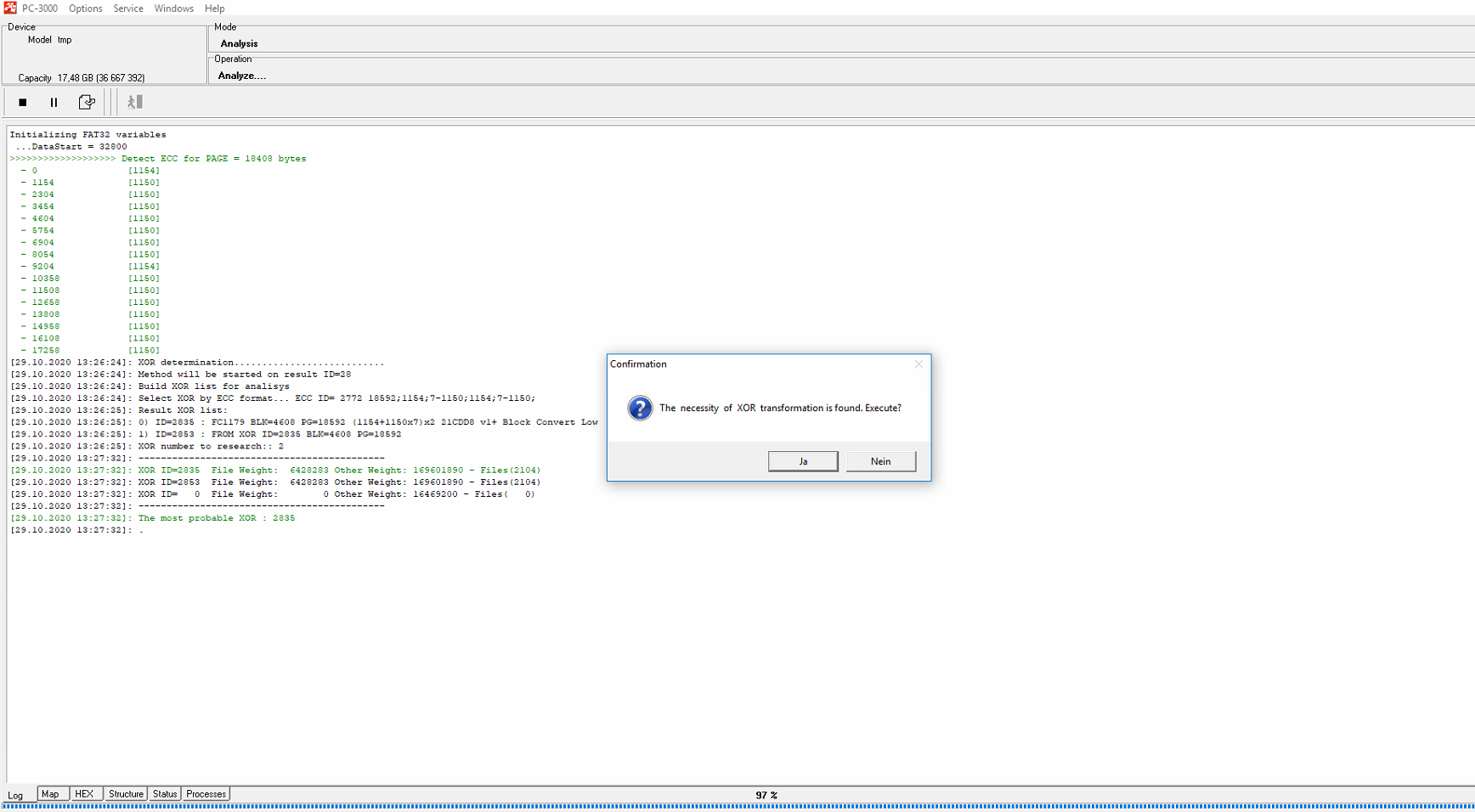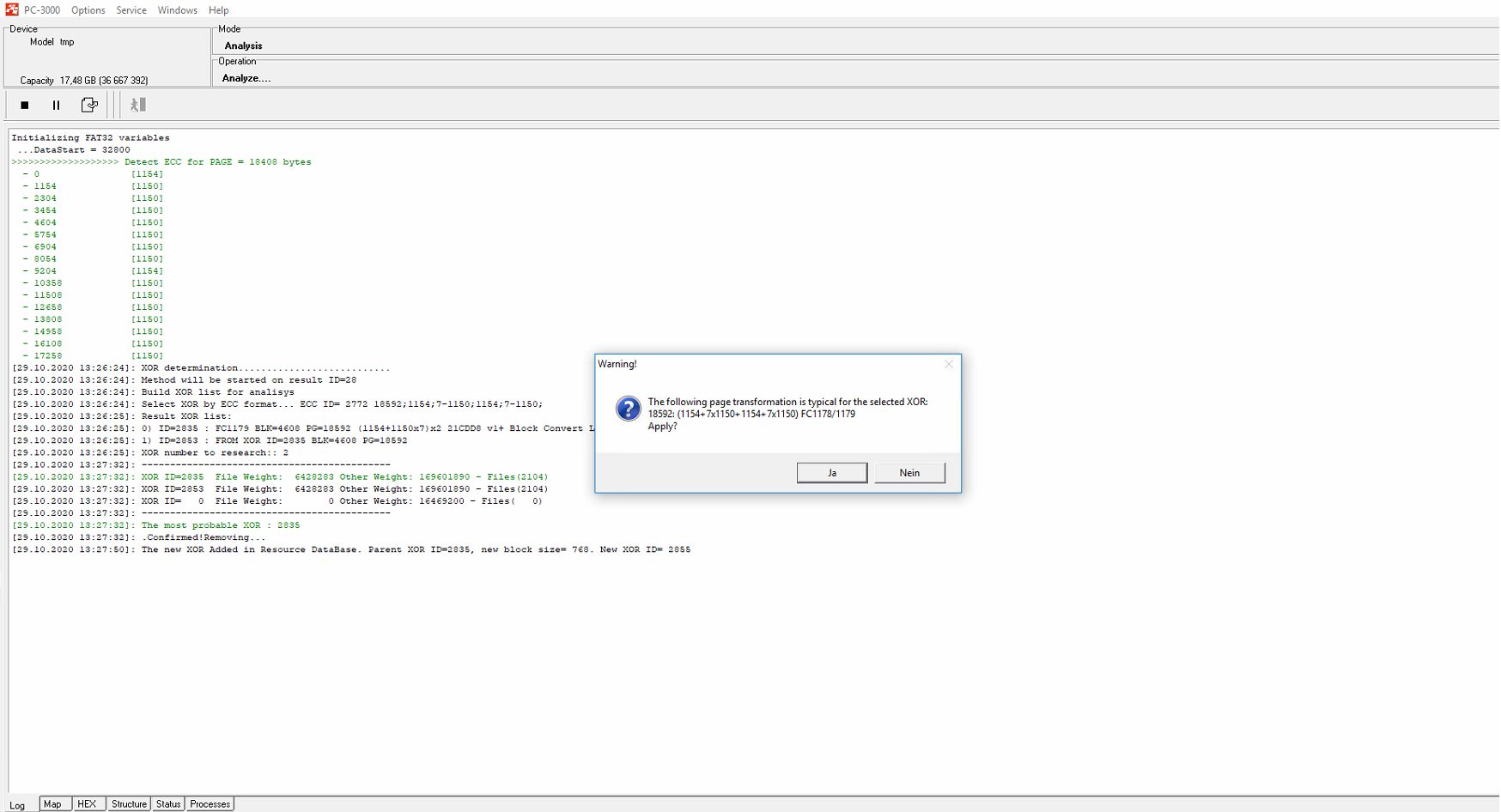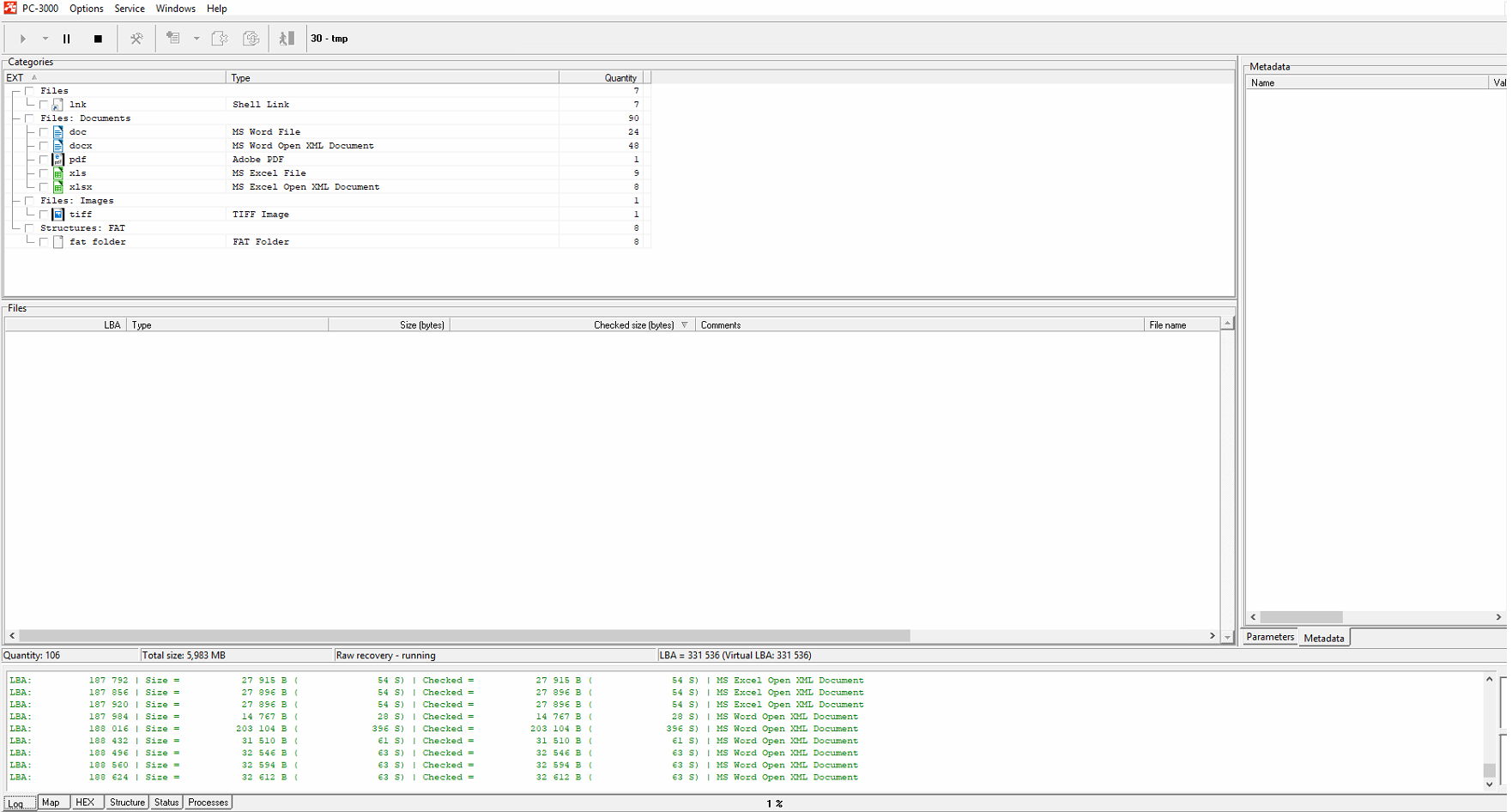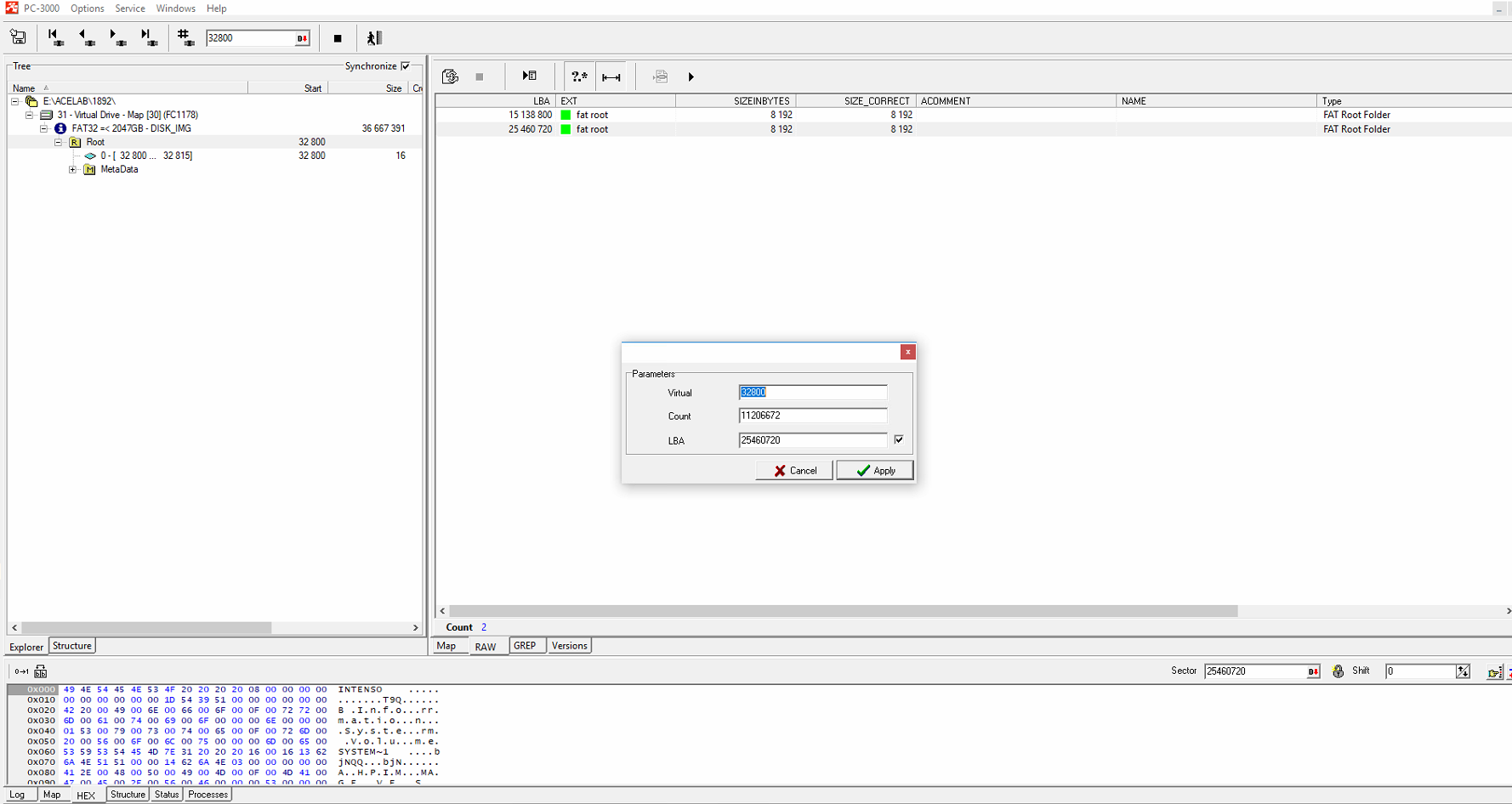Hello friends!
FirstChip Technology started its expansion on the Flash market a few years ago. Today, some of the modern USB Flash drives are based on the FC1178/FC1179 controllers. Data recovery from most of these devices can be intricate because you may face 1-bit size bad columns, adaptive XORs, and very complex internal translations while working with them.
The good news is our developers have done a tremendous job in extracting XOR to add some of the FC1178/FC1179 controllers to the Support List. Now, you can recover data from even more NAND Flash devices! And, in this article, you will find the steps on how to do it.
In our case, we have a 16 GB USB Flash drive with the FC1178 controller (1 chip and 1 part in it).
The Chip ID is 0x2C845832.

Step 1. First of all, we need to add a transformation graph, autodetect the ECC, and correct it. We strongly advise you to autodetect ECC on the transformation graph ONLY (not on the chips).

 Step 2. Don’t forget about rereading the invalid sectors that can be left after the ECC correction.
Step 2. Don’t forget about rereading the invalid sectors that can be left after the ECC correction.
Step 3. The next step is to choose the right XOR for your case.
The FC1178 and FC1179 controllers can have the same type of XOR which is fully compatible between them. If you can’t find the compatible XOR, do not hesitate to contact our TS Department 🙂
Update the Resources Database on the regular basis (e.g. once a week) to always have the latest XORs.
Step 4. In our case, the page transformation was applied automatically after XOR, also this case doesn’t contain an Interleave Mix (split by block, join by pages). So, to check whether the applied XOR is compatible, we try to apply the Raw Recovery on the last graph string:
The result looks very promising. But we still have another problem. How to get the File System?
Unfortunately, the FC works very similarly to the SSS controllers which use only a translator and do not store the Marker in the SA. As a result, we can build images only via the translator assembling the algorithms. Right now, the translator for this type of CPU is not ready, but the ACE Lab developers work hard to find out how the Translator Tables work on the FC117x family. So, for image reconstruction, we are going to use the Virtual Image Building based on the File System!
Step 5. We need to launch the “RAW recovery and create a virtual drive from MAP” option from the Complex Operations menu on the last graph. This one-button-click option is available in the PC-30000 Flash ver. 7.4.17 and higher.
Step 6. After that, we should assemble all files and folders inside the partition using this method. Please keep in mind that this solution works correctly only if all parts of the File System are available in RAW: MBR, BOOT, ROOT:
The final result looks great after all preparations. Unfortunately, it doesn’t have the same quality as it could have had after the Translator assembling. But we are still able to see almost all folders and files that can be recovered without any problems:
FC1178 with the recovered folder structure
If you have any questions regarding your data recovery cases, you’re welcome to address them to the Technical Support department.















 (9 votes, average: 3.67 out of 5)
(9 votes, average: 3.67 out of 5)